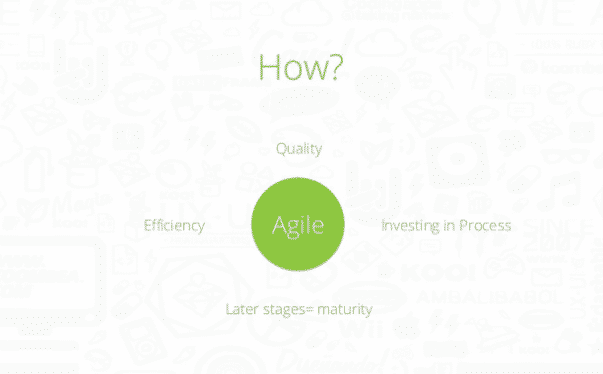If you’re in the product development business, there is almost always a “runway” to consider for any new product under construction (unless your company really does have an open wallet!).
“Runway” is not just a large paved area at an airport or found at the fashion shows in Milan. In the context of product development, it is the term referring to how long you have before you run out of money.
Understanding your runway when developing any product is important for obvious reasons — you want to have a working, saleable, profitable product prior to funds drying up. In the case of companies who answer to investors, they generally expect funding rounds to last for at least a year, so being clear on runway is crucial.
What do you need to consider when it comes to product runways?

Burn Rate
In order to calculate how long you have before you hit the end of the runway, the following formula applies:
Current Cash Holdings
Burn Rate
You current cash holdings is the easy part for any company (usually), but burn rate is a more involved calculation. Burn rate means the amount of cash the company spends each month to continue regular operations. Commonly, the figure used is the negative difference created between cash in and cash out (simple for the many out there who have zero cash in until a working product is created).
Burn Rate Considerations
One of the first things to consider with burn rate is to ensure that the calculations you are using are meaningful. The figure most companies will use is net burn (the figure left when any profits are taken from expenses). It is the calculation of your monthly loss.
Gross burn is the figure when only expenses are taken into account. As an example, you might have $100k of monthly expenses total, however you bring in $25k profit. The $100k is your gross burn while $75k is the figure for net burn.
Why does this matter? You really should know both very well so that you’re prepared should you have a drop in profits, therefore an increase in net burn. Obviously, any increase in net burn is going to shorten that runway.
Account for Changes
It’s quite common for burn rate to vary from month to month, this is what can make it difficult to calculate your runway with any certainty. If you have the data available, you’ll have to work on something like a rolling average for burn rate, leaning on the conservative side if you want to leave yourself some leeway.
Finding the Right Balance
Another consideration when it comes to your burn rate is that balance between what expense is needed for growth and whether you are comfortable with your rate of burn. As Matthew Toren states:
“If a huge leap in growth comes at the expense of a reasonable increase in gross monthly burn, it just might be worth it to increase your spending. Consider the cost of slower growth, missed opportunities and the affects those could have on your business in the long-term, not just the short-term effects of increasing your spend.”
Your only other option may be to increase the cash reserves you have available. If you’re a company which doesn’t want to give up equity to investors in order to buy some runway (where you have no other source of capital), fair enough, this can be an expensive route to take too. When you’re profitable or going for an IPO, any equity you gave up during development could amount to very large checks going to others.
This leaves you with a decision over which burn is really necessary to get you to your goals. What can you trim that doesn’t ultimately lead to growth? Consider this from venture capitalist Mark Suster recently:
“I’ve heard enough companies say “we simply can’t cut costs or it will hurt the long-term potential of the business” to get a wry smile. We entrepreneurs have been spinning that line for decades in every boom cycle. It’s simply not true. Pragmatic cost cuts are always possible and often productive.”
He also mentions that some of the smartest companies he knows are working to lower burn rates through pragmatic cost-cutting. You possibly have more flexibility over your runway than initial calculations indicate.
Is There a “Right” Burn Rate?
In an ideal world, you very quickly become a company which doesn’t even use the term “burn” because you are profitable already. This is rarely the case with any product under development, however.
There is a lot of talk around whether startups are at burn levels which are irresponsibly high. However, as Mark Suster explores, there is no one right answer (though there are several clues — people tend to look sideways if a runway is less than one year). Here’s what he says:
“But the biggest thing to know is this: Companies who are scaling quickly in revenue and with a high gross margin often should invest as much capital in growth as they can manage responsibly because when you find a product / market fit and your company is growing at a very fast scale you want to capture market share before competition sets in. Think DropBox, Airbnb, Uber, Maker Studios.”
Agile Development and Runway
We discuss agile development a fair bit here at Koombea (it’s what we use throughout the development process and is our preferred methodology). One of the challenges businesses face when developing this way is the perception that the concepts of agile and runway don’t support each other.
How can you be flexible and ready to make shifts if you have a limited runway? How can you maintain a known runway if you want to be flexible?
This highlights one of the common misconceptions about agile development right there; that it avoids long-term planning of any sort in favor of decisions made on a weekly basis, or only a few weeks out.
While it’s true that you’re not going to set out an entire, detailed long-term development plan with agile, you still need to outline business goals and some form of plan to get going. Is there a happy medium between planning and having a known-quantity runway and still allowing for agile methodology?
We think so, and this segment from Christopher Michailov-Lee (although speaking of development runway) highlights why:
“Ultimately, having flexibility in your approach to your product strategy and design sessions means a much more expedient development of your product and quicker ability to deploy it to the market. You can always iterate through those areas that are issues, but your initial runway for your planning and development of your digital product should be small enough to solidify your direction and strategy but not long enough to cause significant re-work should your direction need to shift.”
That “significant rework” is a key part. Agile development helps you to save development costs because it is rare that any rework will be “significant.” For any company concerned with staying as close as possible to a known runway, agile can actually be a better fit than longer-term views of development, such as waterfall.

How Long Is Your Runway?
Just like a runway at the airport, the runway you have available with your software development is safer the longer you can make it.
There are two variables which go into your runway calculation; the amount of cash you have on hand and your burn rate, or the net amount of money you are chewing through each month.
Throughout the development process, runway is important to stay on top of. Run out and you’ll never get your product off the ground. Fail to take enough risk and you might sacrifice growth or leave a window open for competitors.
Agile methodology can help product managers stay on track with their runway as it can save development costs and get viable iterations out quickly. Unlike what common myths may tell you, there is plenty of room for planning!
Koombea can help businesses build beautiful apps while maintaining a planned runway. Talk to us today.
